Affiliate links on Android Authority may earn us a commission. Learn more.
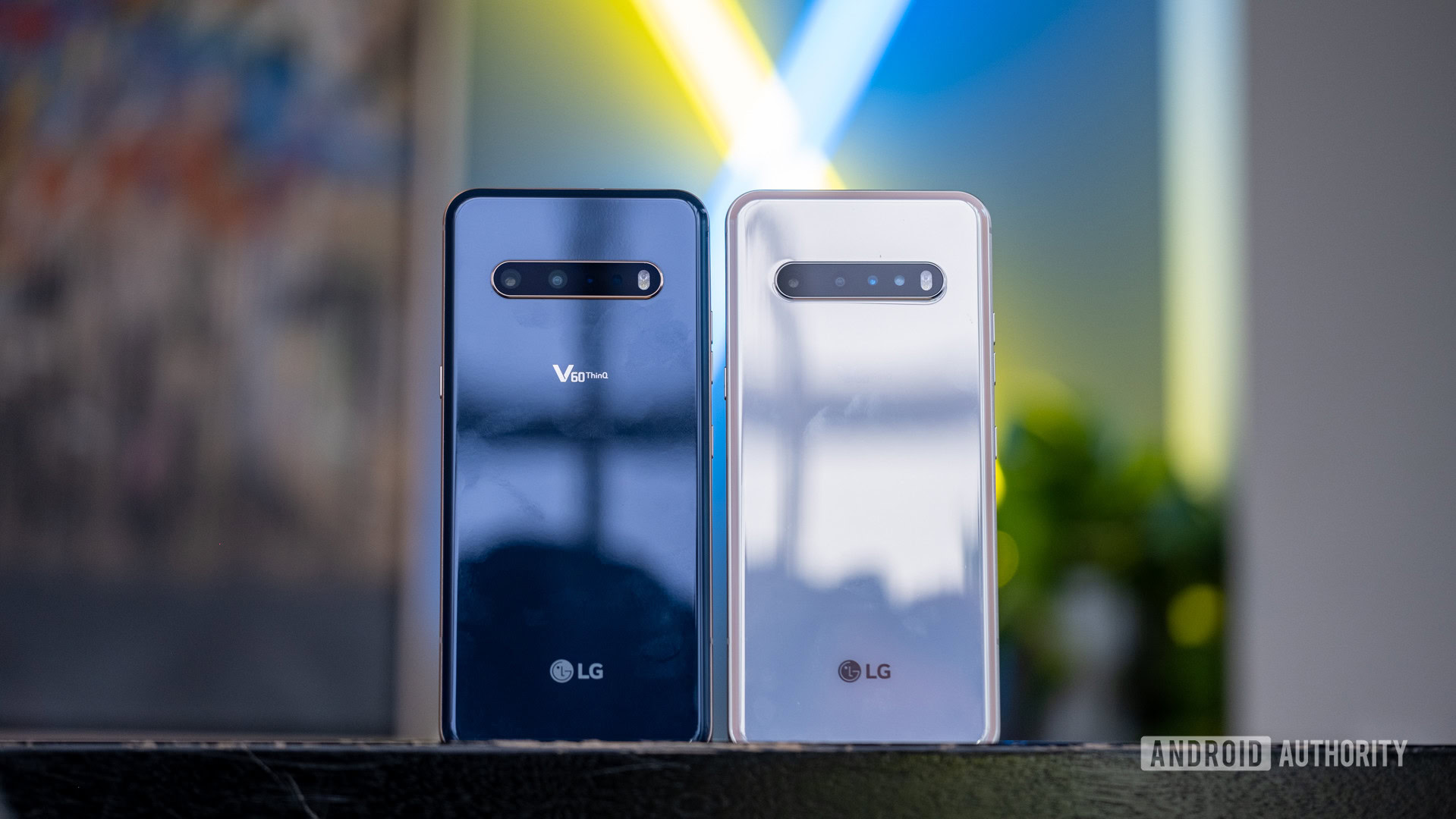
LG V60 ThinQ 5G
What we like
What we don't like
LG V60 ThinQ 5G
LG seemed to embrace the mantra “go big or go home.” The LG V60 ThinQ 5G is not only physically enormous, but it also represented a big gamble for LG in the face of stiff competition from Samsung and others. The V60 also marked the third phone from LG to feature an optional second display that transforms the phone into something akin to a foldable. Further, LG sought to make a stand on pricing by undercutting other flagships by hundreds of dollars. The result? A new phone that clung to old ideas while still moving the bar — even if just a little.
See also: The 5 best LG phones you can buy
Why else was it a “go big or go home phone?” Well, LG actually went home after its release. The LG V60 is the last phone in LG’s flagship series, as the company has decided to pull the plug on its loss-making smartphone division. Did it go out with a bang, and is it still worth buying? Find out in the Android Authority LG V60 review.
Design: Changing things up… kinda
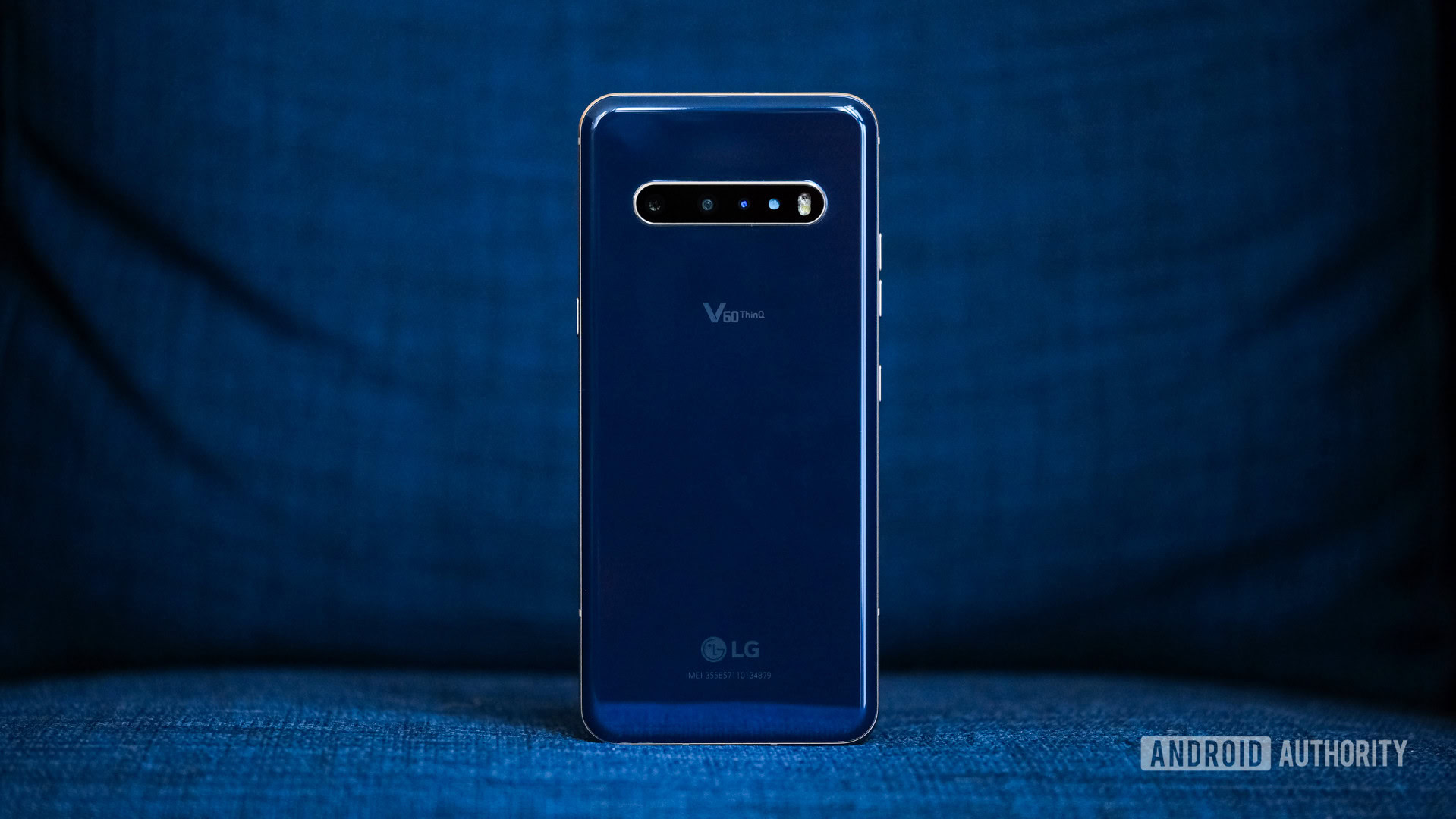
LG recycled its conservative designs for several years. The G7 and G8, and the V40 and V50, for example, were nearly identical devices year over year. Thankfully, LG made some welcome updates to its design language for its 2020 flagship. While the V60 does carry over many basic hardware elements from its predecessors, it is at the very least wearing some new clothes.
Related: The best LG V60 cases you can get
The V60 comes in two colorways: white and blue. Where the white model has silver accents, the blue variant has copper accents. Both are improvements over the solid black/blue of the V40 and V50. The blue and copper model, in particular, has a handsome look to it that provides some personality. Sometimes a little personality goes a long way.

LG went with the glass sandwich approach. The front and rear panels are solid glass, and are separated by a metal frame. On our white review unit, the metal is bare and features a polished chamfer that catches the light. It’s a little Phone Design 2016, but I think it is elegant in its simplicity. The white glass is multi-hued and has a bluish, wintry cast to it. I have no reservations about the quality of the materials or the manner in which they are assembled. It’s a high-quality piece of hardware.
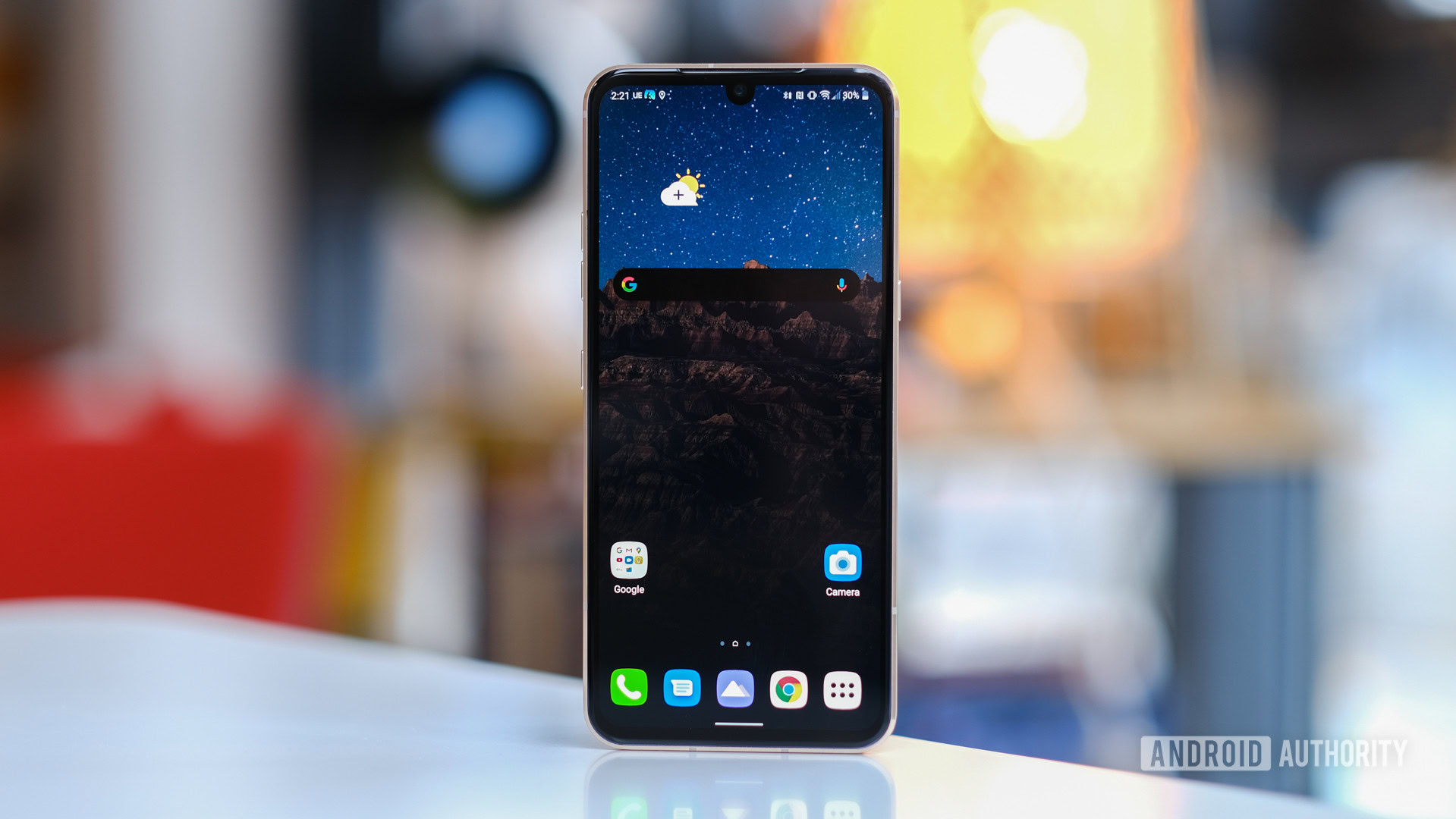
I hope you like big phones, because the LG V60 is absolutely gargantuan. It’s noticeably taller and wider than the already-too-large Samsung Galaxy S20 Ultra. There is a saving grace here: the V60 weighs 6g less than the weighty S20 Ultra, and this is obvious when you hold them side by side. It may not be much, but it’s something. Otherwise, the V60 is a handful. When inserted into the Dual Screen accessory, the V60 borders on mini laptop size. Unwieldy is a word I would use to describe it.
I hope you like big phones: The V60 is taller and wider than the already-too-big S20 Ultra.
Taking a quick spin around the hardware, the V60 covers the basics and then some. The front glass is almost perfectly flat and features only the slightest curve where it tucks into the metal frame. The rear glass is much more rounded along the edges. You’ve got separate volume buttons on the left edge, as well as a dedicated Google Assistant button. The screen lock / power key is on the right edge. All four keys offer perfect travel and feedback. The combo SIM / microSD card tray is on top, and the USB-C port, 3.5mm headphone jack, and downward-firing speaker are all positioned on the bottom edge.
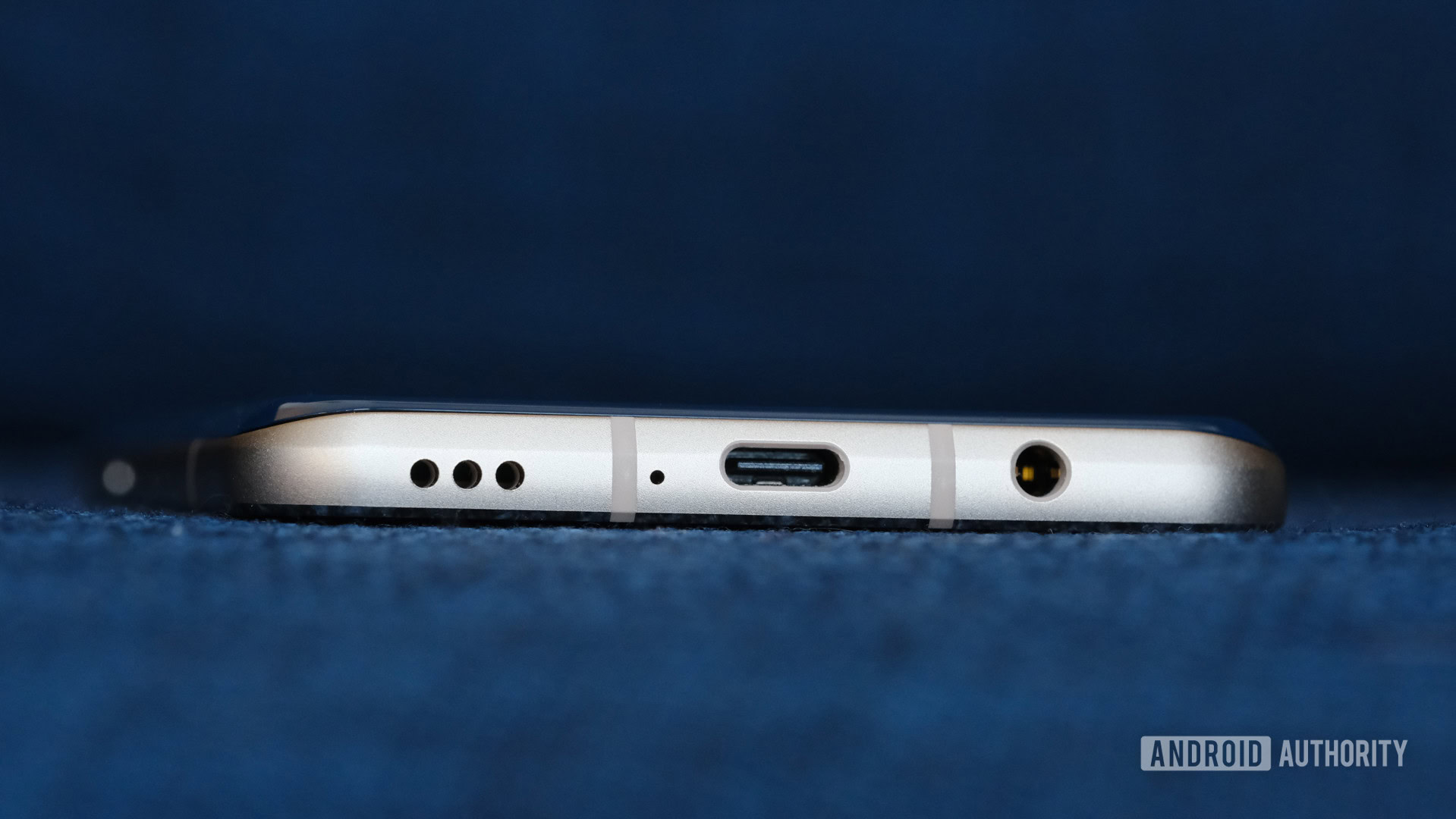
If there’s one final thing about the hardware that I appreciate, it is the camera module. Rather than paste a big ugly square onto the rear panel, LG kept its horizontal line of lenses running from side-to-side. Where the cameras were flush on the V40 and V50, the module is raised slightly on the V60. It comes across as far more tasteful and elegant than blemishes on the backs of many of its rivals.
Last, the phone is rated IP68 for protection against water and dirt.
The LG V60 may not be setting the design world on fire, but it’s not dousing it in cold water either.
Display: Double the pleasure
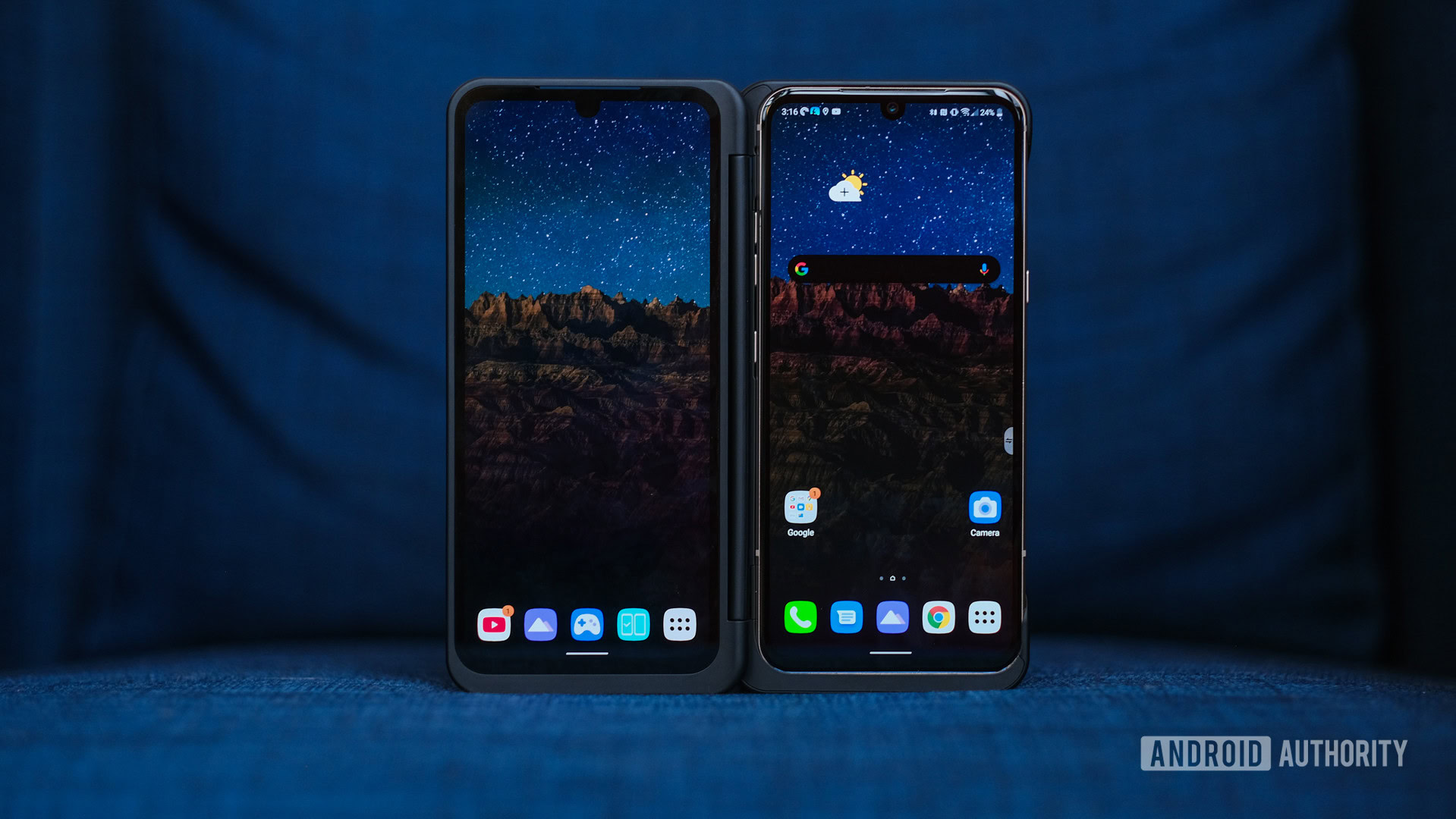
Unlike its competitors, the V60’s display doesn’t adopt any fancy new technology. You won’t find a high refresh rate, nor even Quad HD resolution. Nay, the V60’s 6.8-inch pOLED carries forward Full HD+ resolution at 2,460 by 1,080 pixels for a 20.5:9 aspect ratio. Pixel density is just 395ppi, which is decidedly lower than the ~540ppi of the S20 series. The standard refresh rate surprises me more so than the resolution. With Google, OnePlus, Samsung, and other manufacturers adopting 90Hz and 120Hz panels, the V60’s 60Hz screen comes across as rather stiff. That said, it’s still a fine screen.
LG has always made good screens and I have no real complaints about the V60’s panel. (Okay, except for the bezels.) The pixels are large enough that individual pixels remain hidden even upon close inspection. Color accuracy looks goods, meaning whites look white and colors appear rich. There’s only the slightest blue shift when you tilt the phone at an angle.
The S20's screen looks more brilliant than the V60's when the two are held next to one another.
LG claims that the screen pumps out 500nits when it comes to brightness. It is certainly bright enough to use outdoors under a sunny sky. The S20’s screen, however, looks more brilliant when the two are held next to one another.
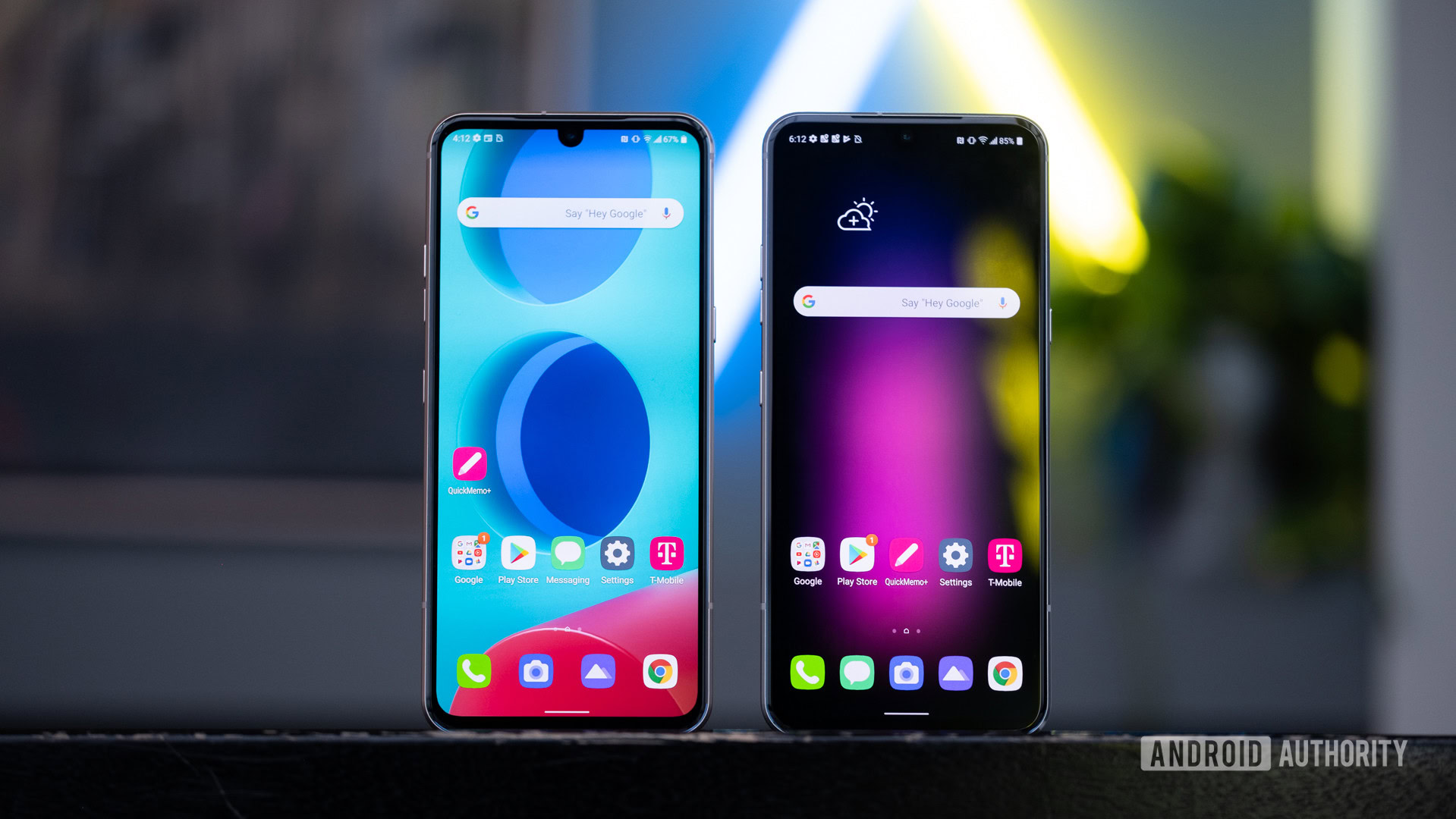
Oddly, LG went with a teardrop notch to make room for the selfie camera. Notches have become an outdated design choice and I’d have much preferred to see a punch hole cutout for the camera. Moreover, LG’s New Second Screen software, which allows you to customize the background colors of the notification bar (and thus erase the notch) doesn’t work when the phone is set to Dark Mode. This befuddling choice means the notch is always visible in Dark Mode. C’mon LG.
The display panel of the Dual Screen is identical to the main screen. LG went with the same size, resolution, and aspect ratio to keep the experience consistent across the two. It even retains the notch, even though there’s no camera on the Dual Screen (what the what?). Importantly, the color balance is the same. It wasn’t on older versions of the Dual Screen, which means whites didn’t match. This time around, they do. That’s a good thing.
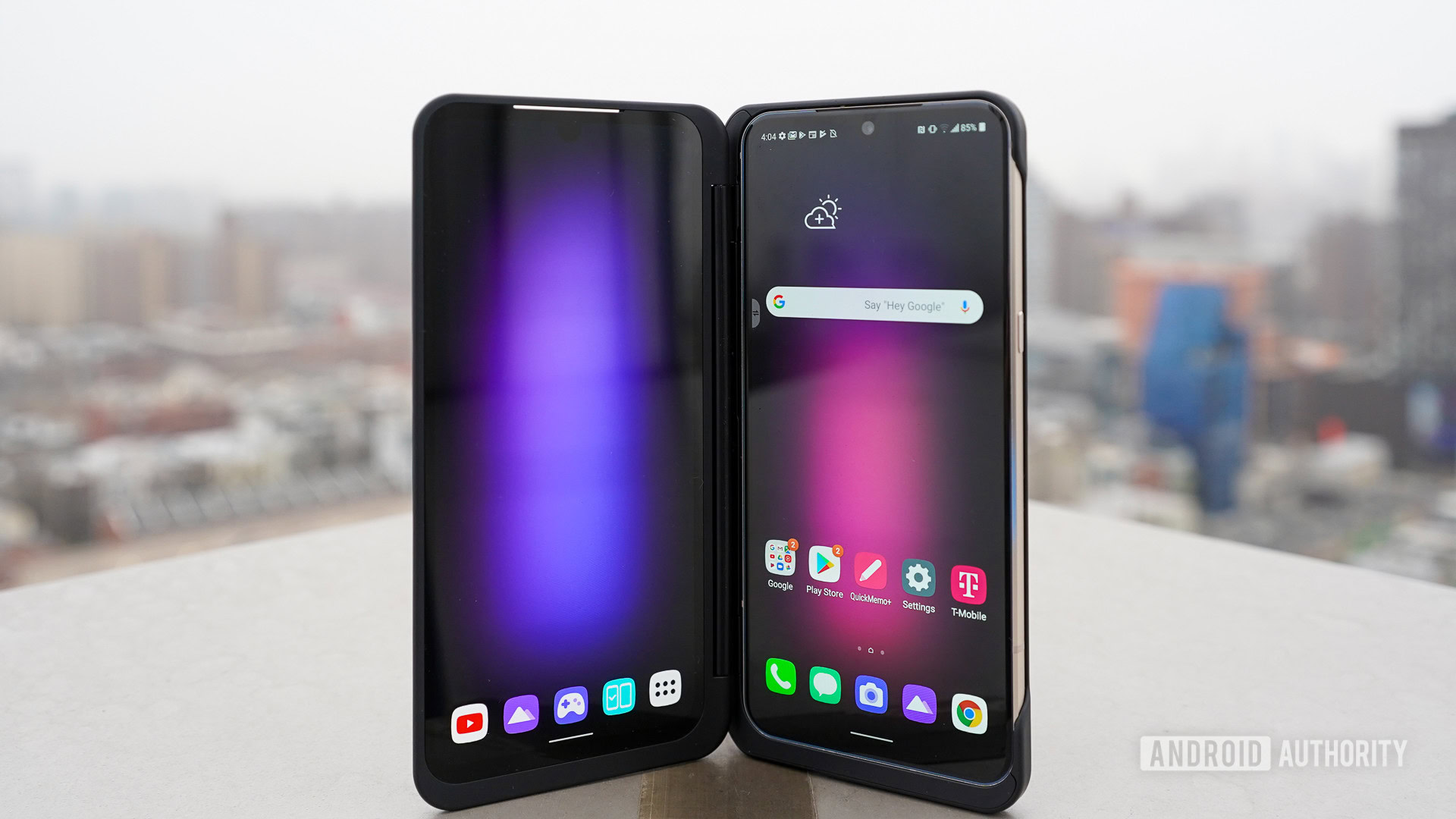
As expected, you can control nearly every aspect about the screen, including night mode, blue light filtering, brightness, and much more.
Plucky and performant
Speed
As is expected of a 2020 flagship, the LG V60 is powered by a Qualcomm Snapdragon 865 processor with 8GB of RAM. That’s less memory than the S20 Ultra, but on par with many other flagships in the space released at that time. As far as everyday use is concerned, the phone feels speedy and powerful. It blasts through tasks with ease and never felt bogged down or slow. As far as benchmarks go, I found the results to be a bit curious. For example, it handily bested the S20 Ultra in GeekBench, but fell behind on 3DMark. The V60 matched the S20’s GFXBench scores. Bottom line here is that I don’t think you’re going to run into any performance problems.
It lives!
LG prioritized battery life, and it shows. The 5,000mAh power cell inside delivers outstanding battery life. Daily screen-on time easily surpassed five hours across a week, and even reached eight hours over two full days. Our Speed Test G battery torture test, which simulates how the phone handles maximum processor output with the screen set to 200nits, also showed five hours of battery life. That bests the S20 Ultra by about 10 minutes. In my time with the phone, I never ran into battery life issues. In fact, the battery may be the V60’s best feature.
As for charging, it supports fast wired and wireless charging. The included 25W charger pumps the phone full of juice rapidly. Going from zero, it reached 27% after 15 minutes, 52% after 30 minutes, and 100% after 92 minutes. It’s not the fastest-charging phone ever, but it shouldn’t need to be plugged in too often.
Dual screen: Heavy, hindered
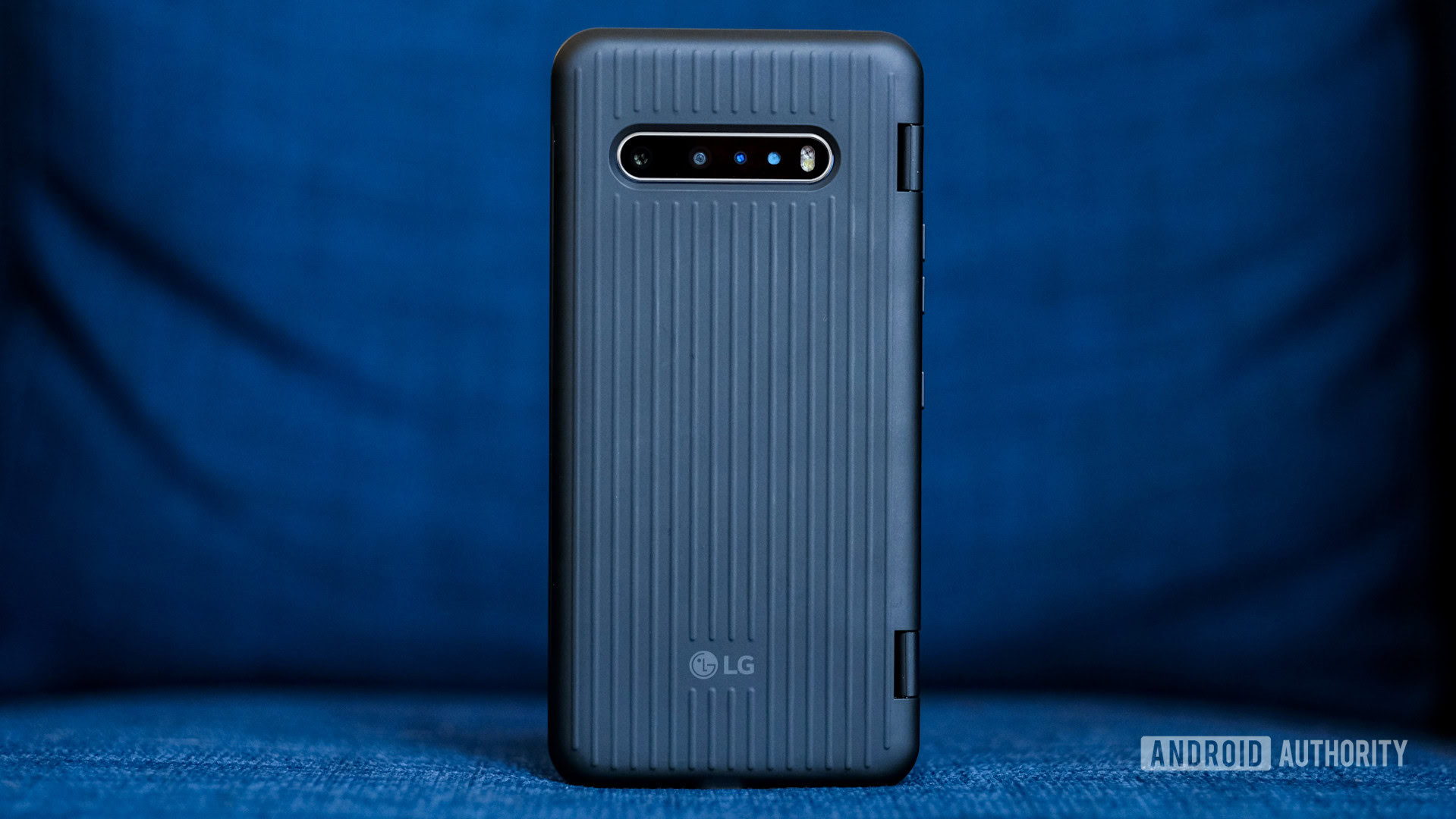
Hunka hardware
By itself, the Dual Screen almost looks like a phone. Black glass covers the front, though the glass is not an actual display. A narrow monochrome window near the top shows the time, weather, and notifications. The glass is encased in a soft-touch plastic frame. You need to slot the phone into the case vertically to mate with the USB-C connector inside the case, then press the phone in firmly. A slim cutout on the rear allows the camera array to peek through. The actual second display is found inside.
The hinge moves a fluid 360-degrees, allowing the Dual Screen to wrap all the way around. The Dual Screen has no problem supporting itself, allowing the V60 to sit like a laptop or stand like a tent. You’ll find plastic nubs on the left side that let you activate the volume and Assistant controls, while large cutouts along the bottom allow you to connect headphones and to hear the speaker. The right side of the phone is exposed.
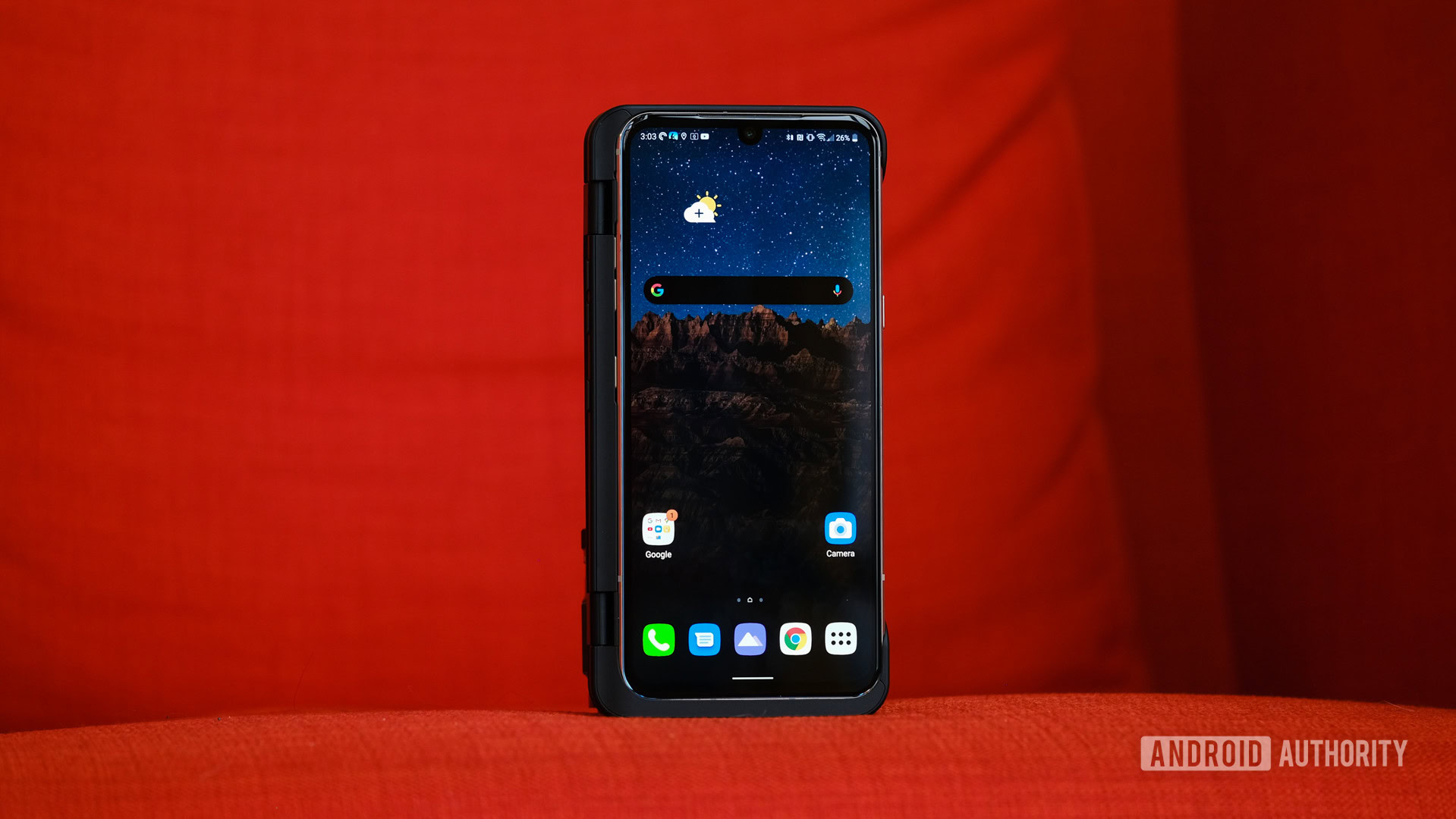
The LG V60 with Dual Screen is not the most elegant contraption.
The phone’s USB-C port is inaccessible when in the Dual Screen. Instead, LG installed a MagSafe-like magnetic connector to the outside of the case. An adapter included with the Dual Screen goes on the end of the USB-C charging cable and attaches to the bottom of the case magnetically for charging. This is a terrible solution. Surely many will lose the adapter. USB-C pass-through makes more sense to us. Thank goodness the phone can charge wirelessly when wearing the Dual Screen.
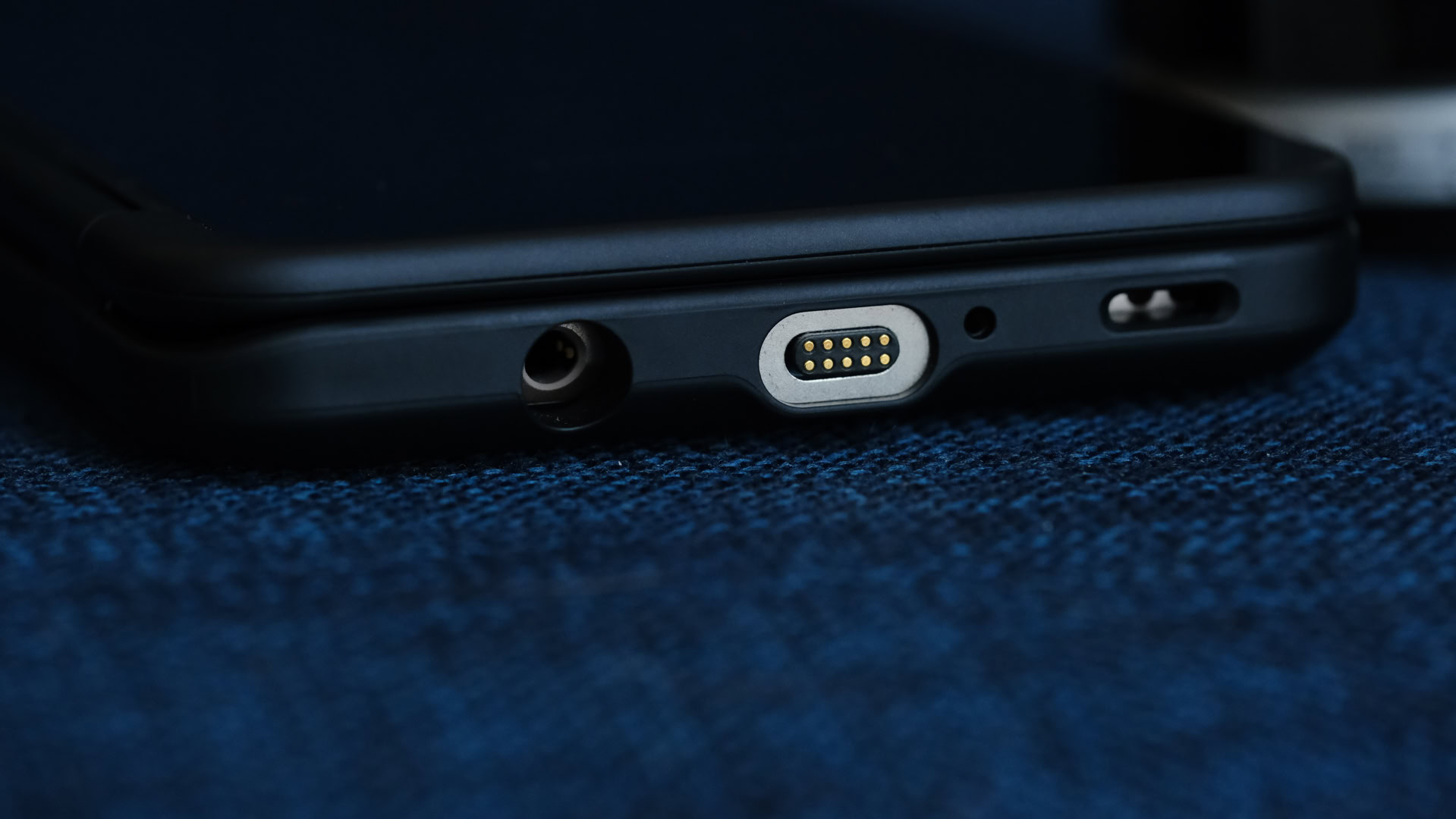
Together, the V60 and Dual Screen weigh an incredible 351g — more than three-quarters of a pound. The combined package is significantly bulkier and heavier than just about any phone I’ve ever used. It’s truly annoying to carry around in your pocket. This is not for your tight jeans. In fact, it’s so cumbersome that I worry many people will forego the Dual Screen for the sake of usability.
It’s not the most elegant contraption, but the LG V60 ThinQ with the Dual Screen does provide the basics of a two-screen / large-screen experience.
Clunka software
The Dual Screen is controlled by a floating widget on the home screen. Tap it to access the various Dual Screen functions. You can also turn the second screen on via Quick Settings.
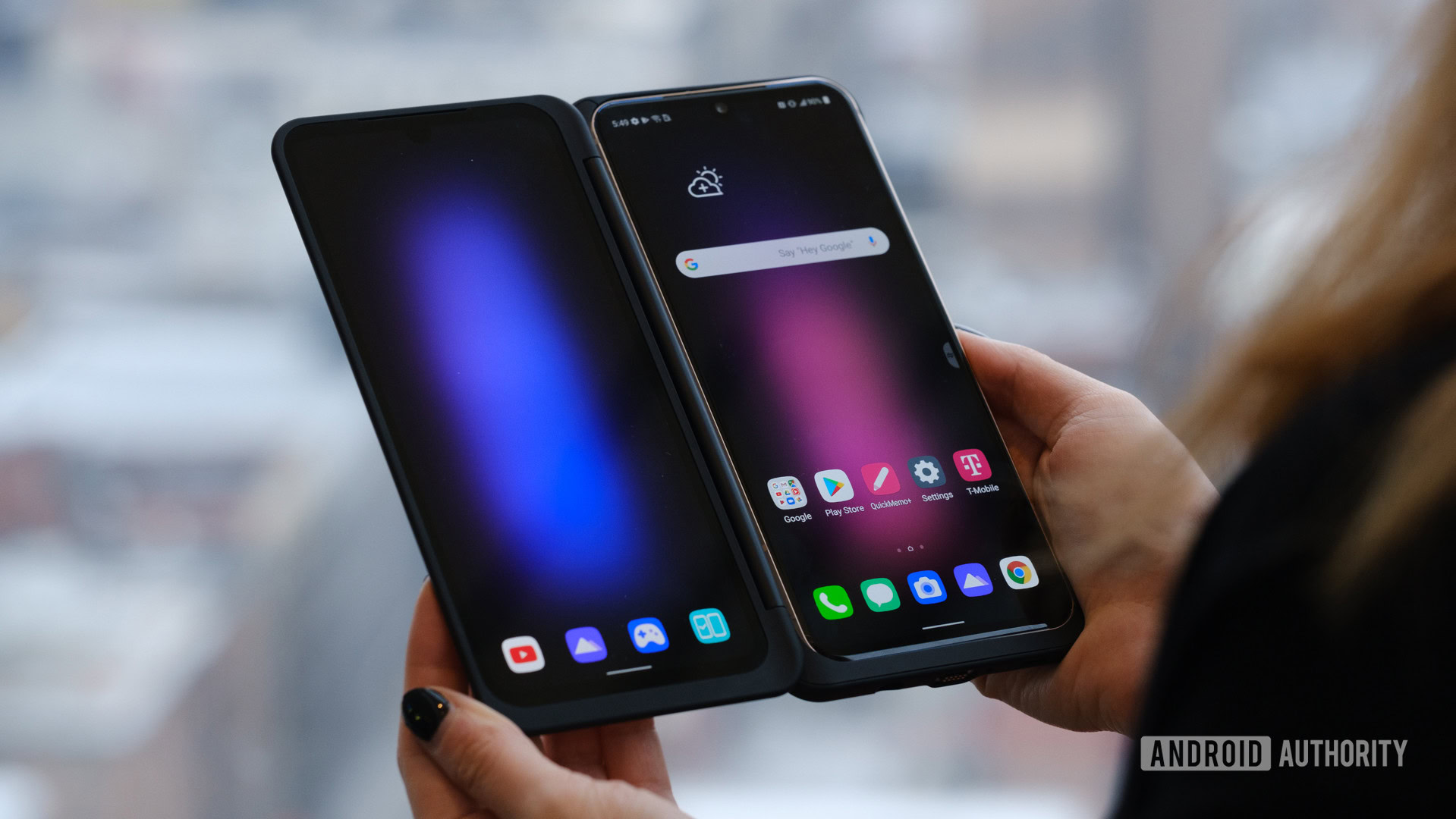
By default, the Dual Screen acts as a separate home screen with its own app dock at the bottom. You can open any app on the second screen no matter what you’re doing with the main screen. You can also: choose a default app to launch whenever the Dual Screen is toggled on; push the home screen over to the Dual Screen; put the main screen to sleep; or swap screens.
A few more options become available inside applications. For example, you can open the wide view, which stretches an app across both screens. Keep in mind, the hinge separates the screens by half an inch and it’s rather ugly running down the middle of your app. Moreover, not all apps support this view. Thankfully LG has improved the list over time and basic Google apps (Chrome, Gmail, Maps, Photos, YouTube) are supported. Most other apps don’t support wide view, which is a major bummer.
Here’s the worst part. Only one app runs at a time on the Dual Screen. And you cannot drag-and-drop an app (or content from an app) on one screen to an app the other. This pales in comparison to true foldables like the Galaxy Z Fold series which can run up to three apps at a time, and allows you to move content back and forth.
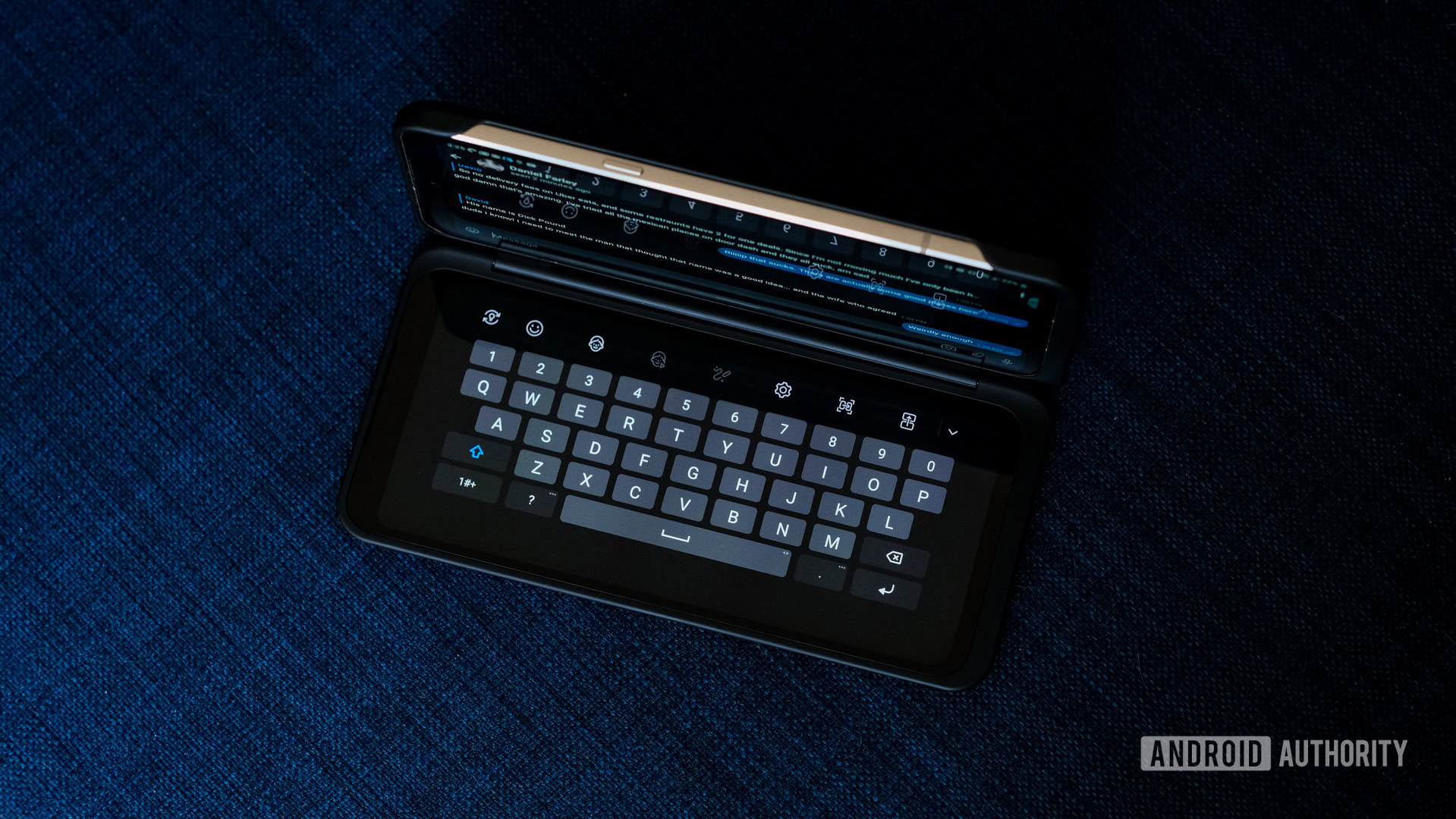
LG installed a Game Launcher app that serves as a home for your games. Here, you can use the LG Game Pad when playing supported games. The main screen turns into a controller to manage the action on the second screen. What’s more, you can fully customize the game pad and even create your own.
The V60 with Dual Screen doesn't quite do what I wanted or hoped it would.
In my time testing the phone, I found the biggest benefit of the Dual Screen was to simply have two full-screen apps side-by-side. I could run Slack on one and browse the web in the other.
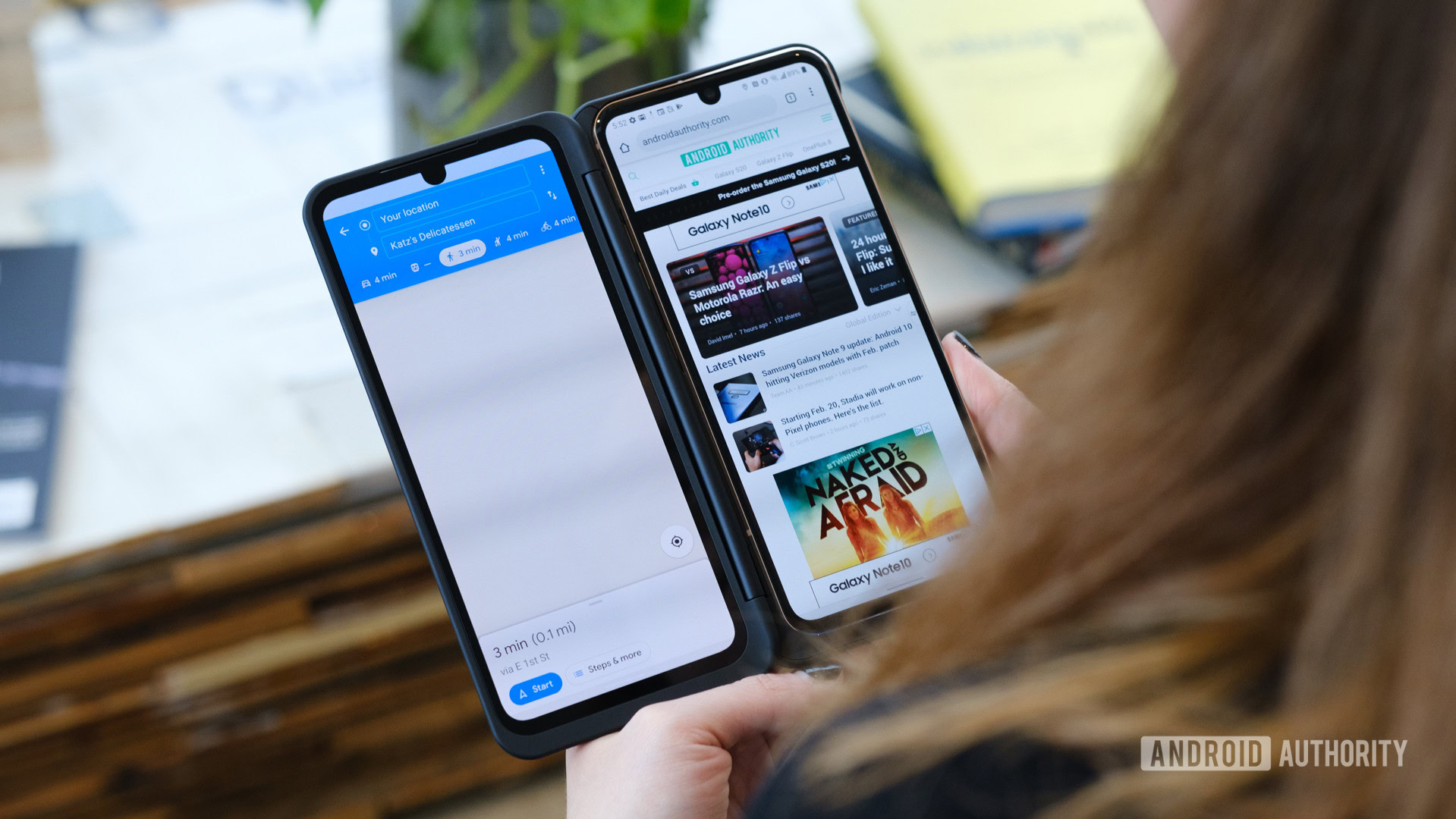
Bottom line, the V60 doesn’t quite do what I wanted or hoped it would, which is to open up and give me a larger, single space on which to play and create. Instead, it provides two separate spaces that won’t interact with one another.
Camera: Missing optics
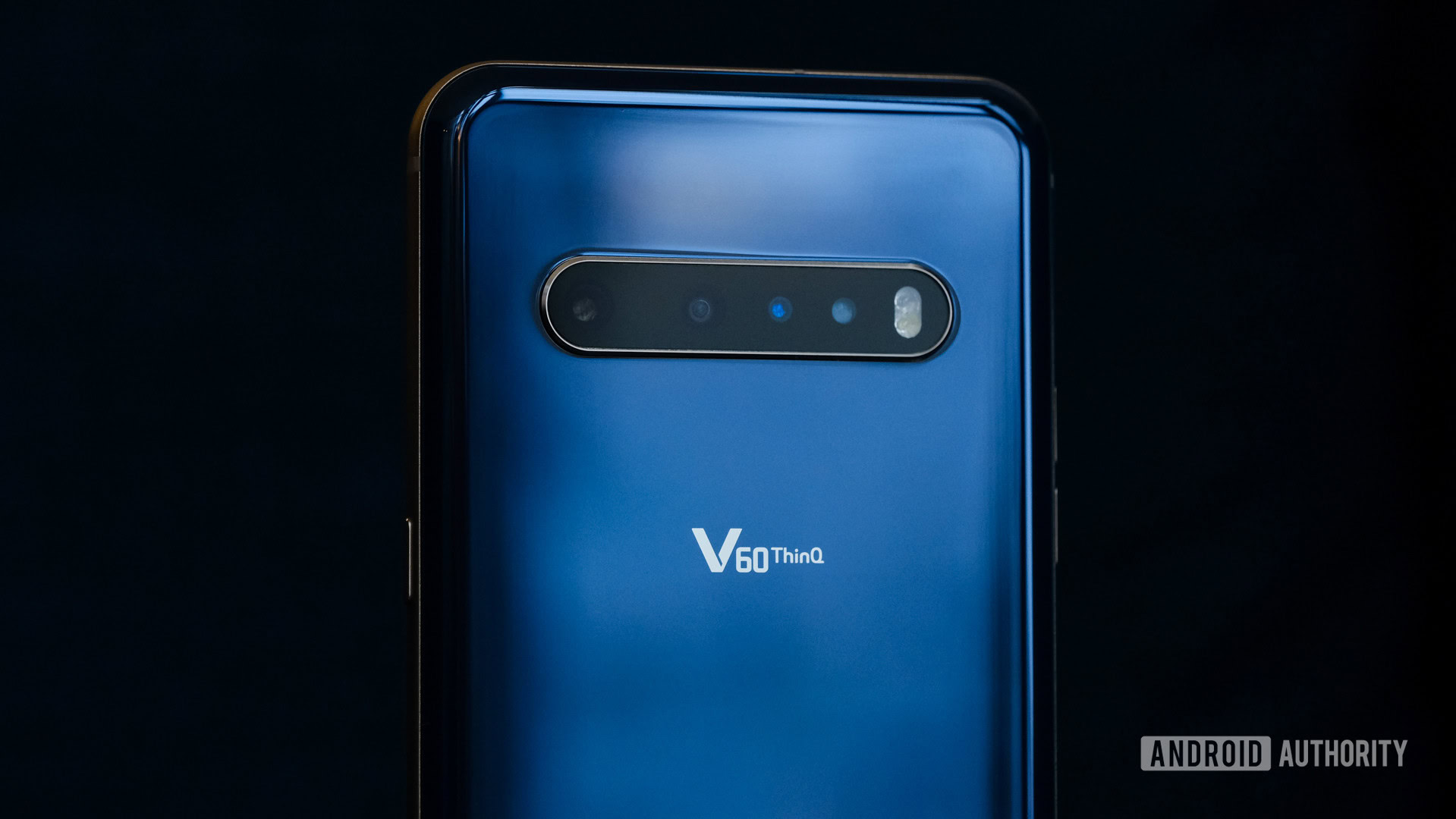
If there’s one feature flagship phones need to excel at, it’s the camera. Competition between Apple, Google, HUAWEI, LG, and Samsung is fierce when it comes to imaging. “Just okay” isn’t good enough for flagship buyers. The V60 doesn’t quite match its competitors, but it comes closer than ever.
Read more: The best camera phones you can get
LG made an interesting change this year. The V series has traditionally supported the ultra-wide, regular, and telephoto configuration. The V60, however, drops the optical telephoto lens and instead relies on digital zooming in the main sensor.
The V60’s main sensor captures 64MP images at f/1.8. The pixel size is 0.8 microns, and the camera offers a 78-degree field of view. This sensor bins down to 16MP. LG says it supports zoom from 2x to 10x. The ultra-wide camera has a 13MP sensor at f/1.9 with 1-micron pixels and a 117-degree FoV. The delta between the main sensor and ultra-wide is enormous, as you’ll notice when you zoom in and out while using the camera. These are both assisted by a time-of-flight sensor, which generates depth information.
Pictures I took with the LG V60 look fine, but not exceptional.
Pictures I took with the LG V60 look fine, but not exceptional. White balance was almost always accurate, but exposure was inconsistent. The phone struggled when using HDR. In the monument shots you can see that the tree is overexposed while much of the detail in the cubby is lost to darkness. I was hoping for better. I also noticed a lot of sharpening applied to images, which leads to a slightly noisy appearance. Shots of people look solid, for the most part. Bokeh in portrait shots is decent, with sharp relief between the subject and background.
As much as I like ultra-wide cameras, I was a bit let down with the V60’s results. The 117-degree FoV leads to highly visible optical distortion. I expected to see some, but it’s a too strong an effect in some photos. Zoom works fairly well. Remember, there’s no optical zoom here; it’s all managed via software digital crop. The high-resolution sensor helps keep photos fairly detailed and sharp as you zoom in, but you can see some noise in the zoomed shots.
The selfie camera takes 10MP snaps at f/1.9. The field of view is fairly narrow at 72.5 degrees. This means no wide-angle selfies. That said, the images come across as clean, sharp, and properly focused. Portrait shots are a little noisy, but still perfectly acceptable.
On the video front, the V60 is able to record 8K video at 24fps. LG says the frames per second may actually run 25 or 26, but this is to ensure that the average is 24. Without an 8K TV or monitor, we have no way to assess just how good the quality is. The 4K 60fps footage I shot, on the other hand, looks excellent.
Extras: Here and there
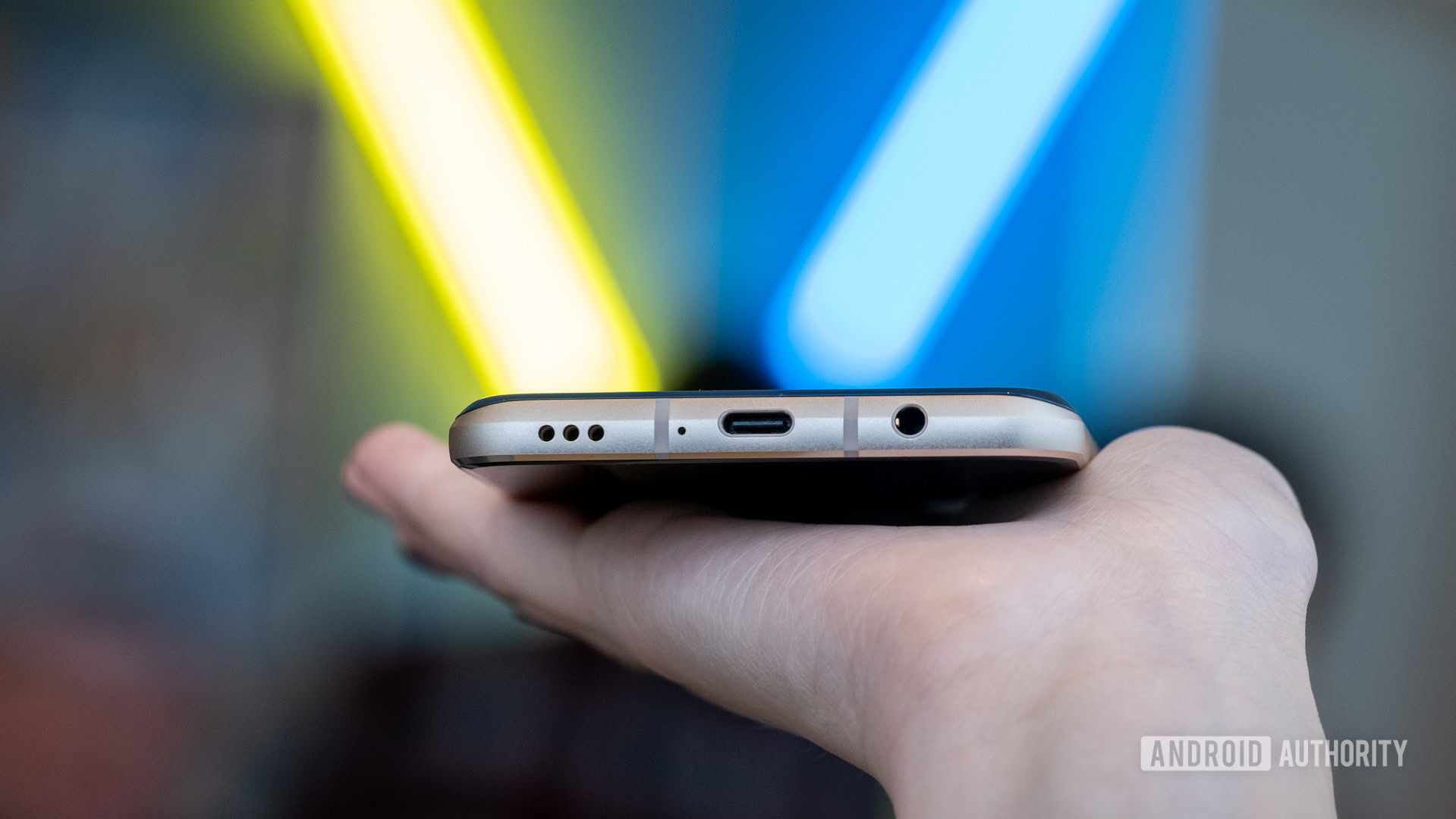
Now hear this: LG continues to be one of the best phone makers when it comes to audio. We have to give LG some applause for keeping the 3.5mm headphone jack available on its phones. This alone may make LG worth considering. But LG takes it a step further. The V60 carries over the quad DAC we’ve come to love for processing audio and the result is superior sound when it comes to media playback. Then there’s audio capture. The V60 has four mics that manage to record crystal clear sound. One feature we really appreciate: The audio can effectively “zoom” along with the lens when you are shooting video, meaning the sound centers on your subject. The results are palpable. LG handily bests the competition as far as audio is concerned.
Stereo speakers are often hit or miss on flagships, but LG knocked them out of the park. Combining the output from the earpiece and bottom-firing speaker, the V60 delivers crisp, punchy sound that you can crank way up. It’s the best-sounding phone I’ve heard this year.
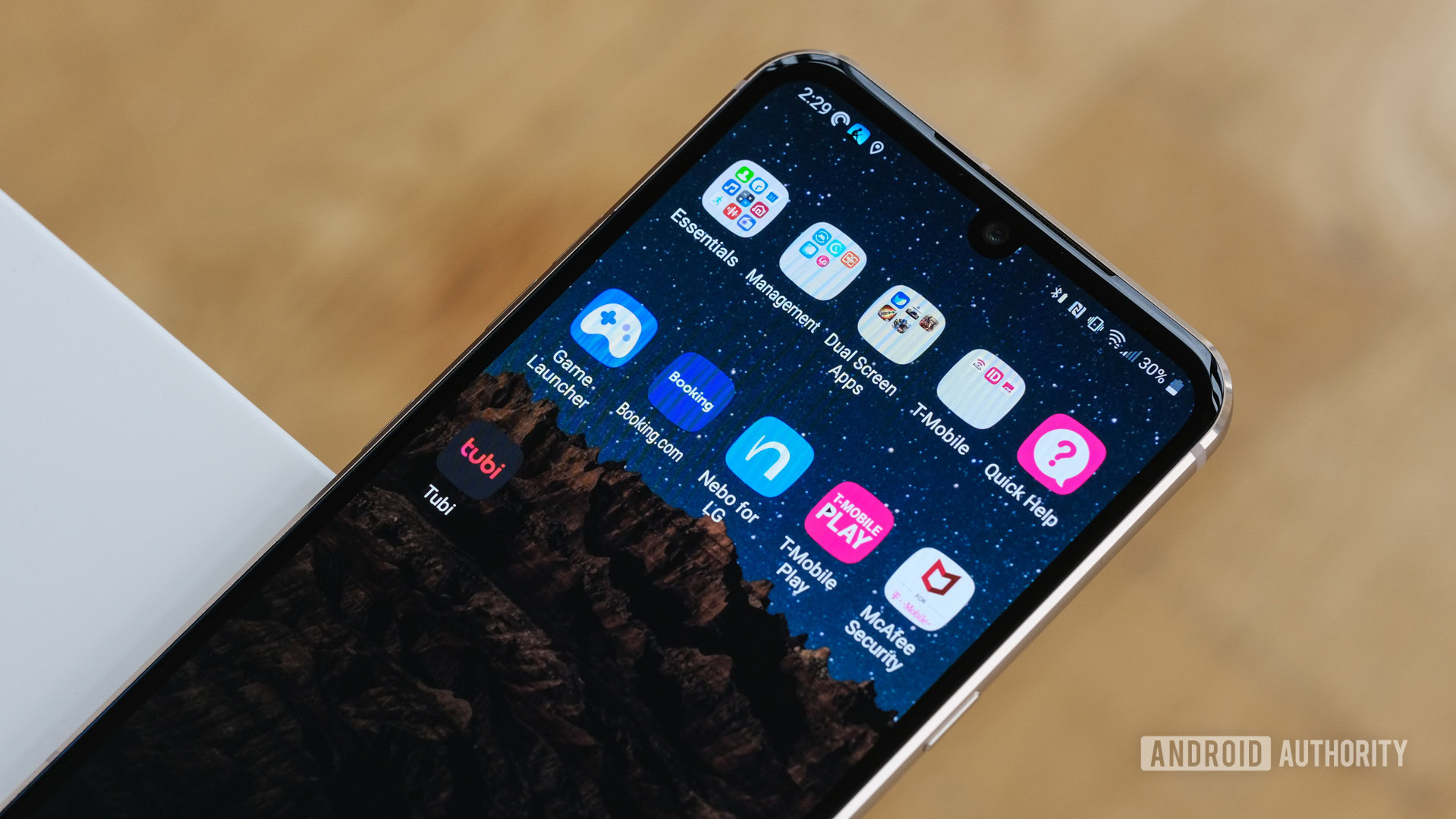
LG Pay: With an NFC radio no board, the LG V60 ships with LG Pay out of the box. This is LG’s mobile payment service, which competes with Android Pay and Samsung Pay. We’re calling it out because LG was much slower to roll it out than its competitors and it’s now here. You’ll have to create an LG account (if you don’t already have one) and of course add a debit or credit card. Once you do, you can take advantage of tap-to-pay mobile transactions. LG Pay also works on the web.
5G: LG lent us a T-Mobile variant of the V60 and it supports T-Mobile’s 5G network. We were able to take the phone out and test it on T-Mobile’s sub-6GHz 5G network and came away impressed. T-Mobile’s 5G footprint is pretty solid in the metro NYC area and delivered download speeds in excess of 150Mbps.
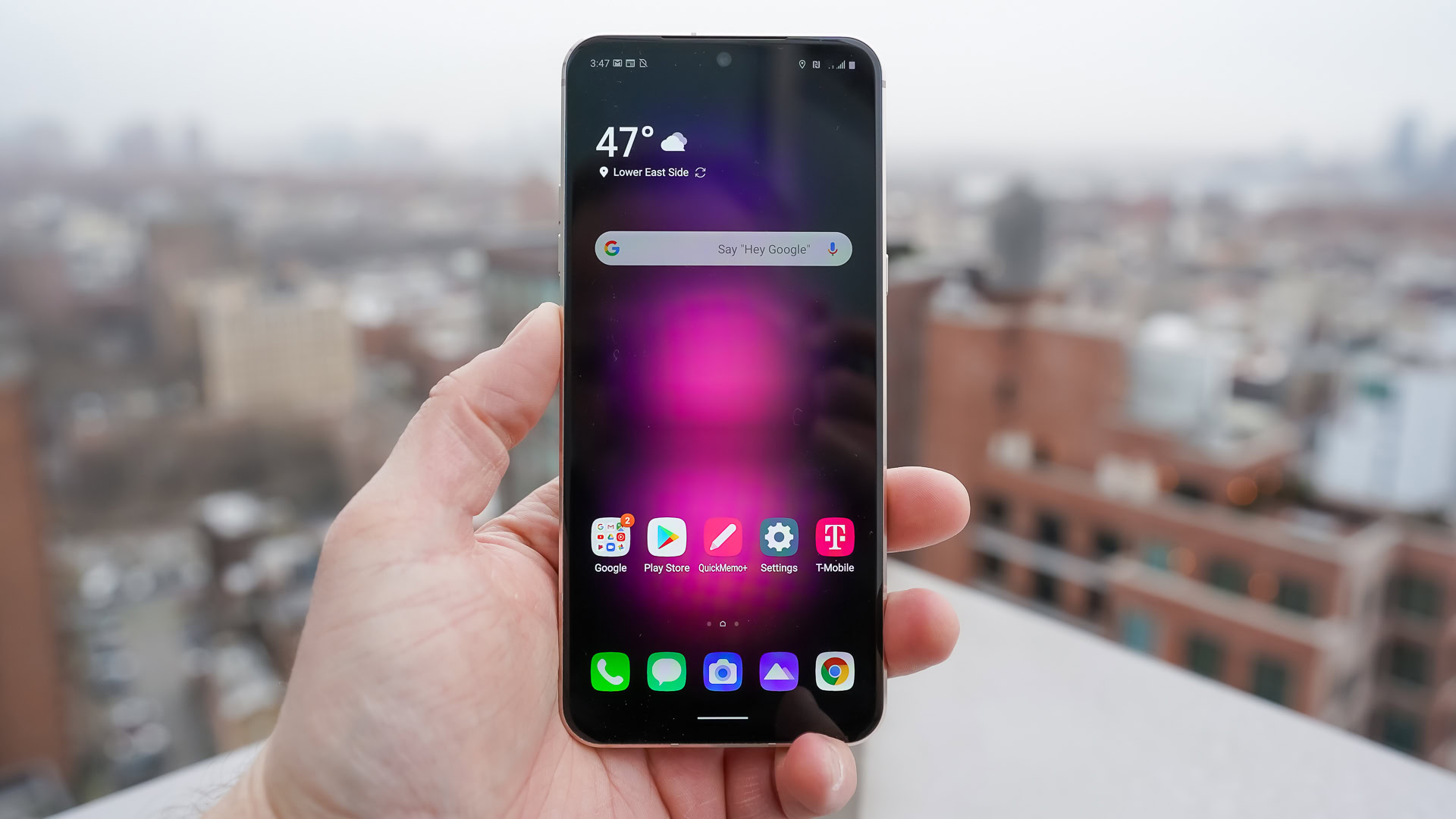
UX: LG has cleaned up its Android user interface, but it’s still not the best one out there. The newer fonts and graphical elements come across as outdated and inelegant. I wish the pre-loaded themes and wallpapers were better. It does offer plenty of room for customization. The V60 is running Android 10 and has the February security patch installed, but can be upgraded to Android 11 via an OTA update.
There were plenty of concerns about long-term support after LG announced it would be exiting the smartphone business, it later clarified that many of its premium devices will receive three years of updates. The V60 is included in that list, meaning it should be eligible for Android 13 as its final upgrade. That’s really great and will prolong the phone’s lifespan significantly.
I do have to take exception to the amount of preinstalled bloatware. There are nearly 20 T-Mobile and other apps loaded onto the phone. While some can be removed, some cannot. The phone’s 128GB of storage isn’t in any danger of being overrun, but it’s aggravating to have unremovable apps stuck on your phone.
LG V60 specs
| LG V60 ThinQ 5G | |
|---|---|
Display | 6.8-inch P-OLED 2,460 x 1,080 resolution (Full HD+) 395ppi 500-nit brightness 20.5:9 aspect ratio Dual Screen accessory support |
SoC | Qualcomm Snapdragon 865 |
GPU | Adreno 650 |
RAM | 8GB |
Storage | 128GB microSD card slot (2TB max) |
Cameras | Rear cameras - Main: 64MP sensor, ƒ/1.8 aperture, .8μm pixels, 78-degree field-of-view, 1/1.72", 2x to 10x zoom, supports 16MP 1.6μm pixel binning - Super wide: 13MP sensor, ƒ/1.9 aperture, 1.0μm pixels, 117-degree field-of-view, 1/3.4", EIS - Time-of-flight sensor (Z Camera) 8K video recording at 7,680 x 4,320 resolution Timelapse: x1, x5, x10, x15, x30, and x60 frame rates Front camera - Main: 10MP sensor, ƒ/1.9 aperture, 1.22μm pixels, 72.5-degree field-of-view, 1/3.1" |
Audio | Headphone jack Quad DAC Four microphones LG 3D Sound Engine: Uses AI to optimize audio playback by changing settings based on content (i.e. sports, movies, news, music, etc.) |
Battery | 5,000mAh Non-removable Quick Charge 4+ Wireless charging |
Network | 5G connectivity Verizon: mmWave and sub-6GHz All other carriers: sub-6GHz LTE / 3G / 2G |
Connectivity | Wi-Fi 802.11 a, b, g, n, ac, ax Bluetooth 5.1 NFC USB-C (USB 3.1) |
IP rating | IP68 |
Biometrics | In-display fingerprint sensor |
Software | Android 10 |
Dimensions and weight | 169.3 x 77.6 x 8.9mm 218g |
Colors | Classy Blue, Classy White |
Dual Screen accessory | Main display: 6.8-inch P-OLED 2,460 x 1,080 resolution (Full HD+) 395ppi 20.5:9 aspect ratio Cover display: 2.1-inch monochrome Dimensions and weight: 175.9 x 86 x 14.9mm 134g |
LG V60 review: Should you buy it?
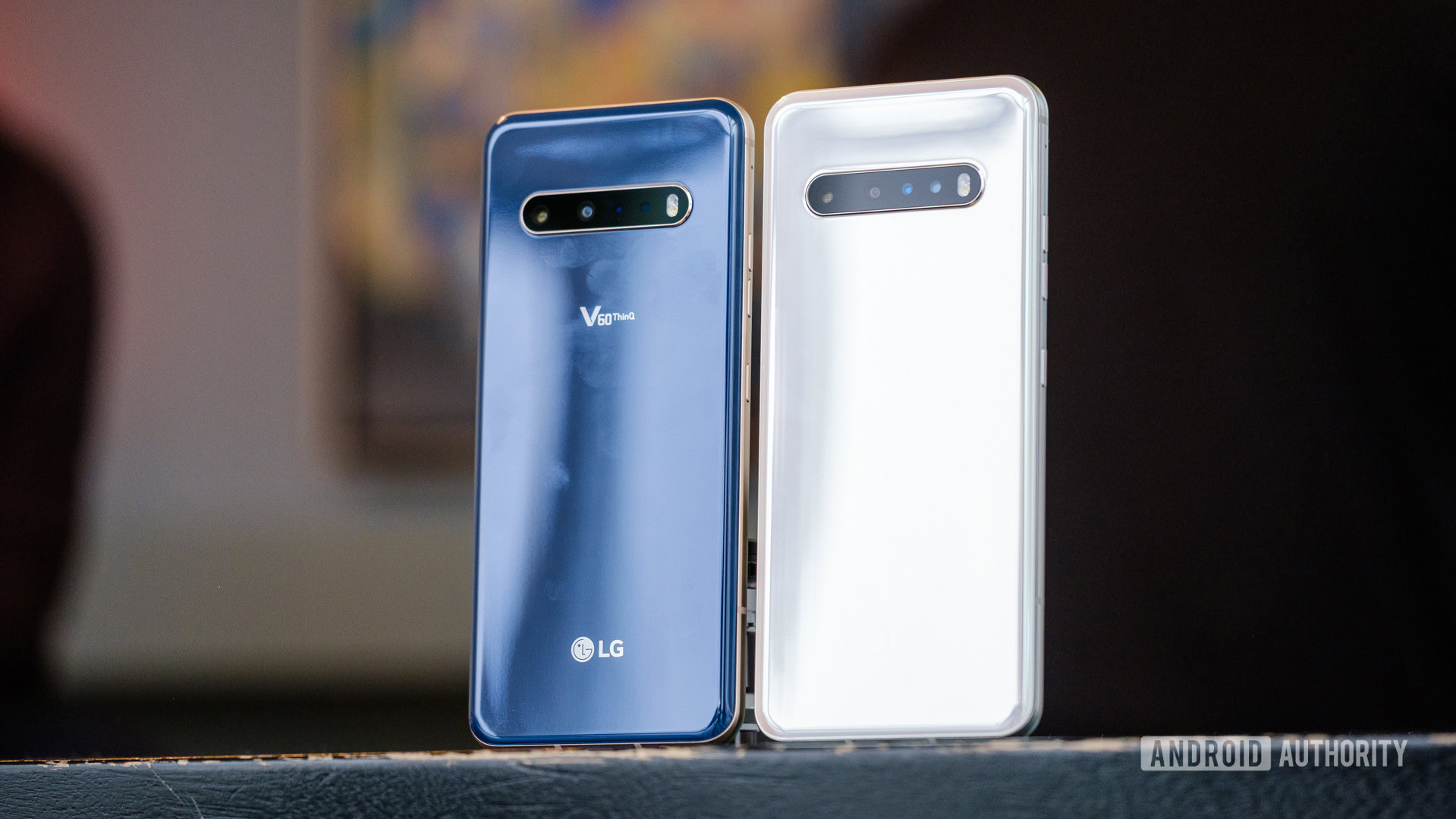
If you’re looking for a bargain, the LG V60 is still a solid offering, even if the LG Velvet is a little more palatable thanks to its smaller size. Whatever you do, do not pay full price for the LG V60, as it is discounted from its original price point. Amazon is selling it unlocked for as little as $430.
If you value LG’s typical strengths, then the V60 might work for you. LG did a bang-up job with the hardware, audio, and battery life in particular. The V60 also has a beast of a battery. Moreover, the optional Dual Screen does add a measure of functionality, though perhaps not as much as true foldables.
Long-term review: LG V60 — one year later
On the other hand, some aspects of the phone disappoint. The camera is quite good, and yet still manages to fall short of what competing phones deliver. Perhaps more damningly, the camera doesn’t offer any standout features or functionality. Then there’s the display. While it’s a fine Full HD+ panel, it doesn’t offer the resolution or the refresh rate available on competing models that some consumers may pine after. Last, the software feels childish at times and could use a boost in sophistication.
For the not-too-picky buyer, the low price and stellar battery life may be reason enough to jump on the V60. For those seeking that little extra something, the LG V60 ThinQ might leave you wanting.
